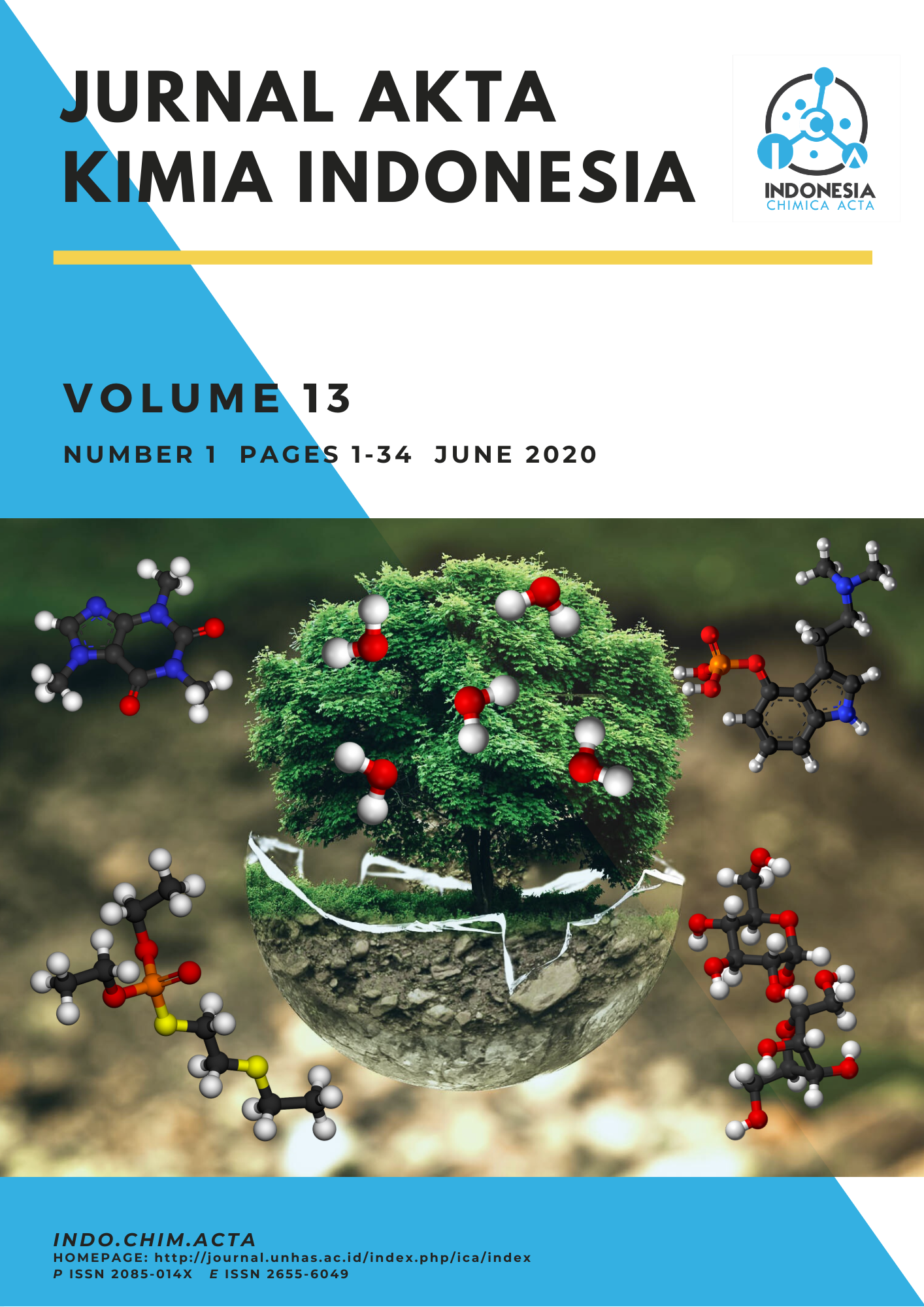Main Article Content
Abstract
Waste of heavy metal lead (Pb) in waters needs to be addressed through phytoremediation because it is toxic to the environment. The purpose of this study is to determine the effect of water hyacinth (Eichhornia crassipes) ability in water to absorb heavy metal Pb and its effects to total dissolved solids (TDS) of groundwater during the phytoremediation process. Using E. crassipes, groundwater samples and Pb(NO3)2 as a source of Pb, the initial characterization of the two samples was previously carried out. Created four treatments of ground water, i.e.: P1 contains 2 ppm Pb with E. crassipes, P2 contains 4 ppm Pb with E. crassipes, P3 contains 2 ppm Pb without E. crassipes, and P4 contains 4 ppm Pb without E. crassipes. Observation of Pb by method of atomic absorption spectrometry (AAS) and determination of TDS by gravimetric method, each carried out on days 0, 4, 8, and 12. The results show the treatment of 2 ppm Pb, E. crassipes is more effective at absorbing Pb which is 96.0% compared to treatment 4 ppm Pb which is 90.0%. While 2 ppm Pb and 4 ppm Pb as control only 18.5% and 17.5%. Treatment of 2 ppm Pb which uses E. crassipes shows better water quality than concentration TDS 62.55 ppm compared to treatment of 4 ppm Pb with TDS 70.50 ppm while 2 ppm Pb and 4 ppm Pb as a control does not significantly affect to water quality.
Keywords
phytoremediation
lead
Eichhornia crassipes
total dissolved solids
Article Details
How to Cite
Fahruddin, F. (2020). Absorption of Heavy Metal Lead (Pb) by Water Hyacinth (Eichhornia crassipes) and Its Influence to Total Dissolved Solids of Groundwater in Phytoremediation. Jurnal Akta Kimia Indonesia (Indonesia Chimica Acta), 13(1), 10-15. https://doi.org/10.20956/ica.v13i1.9977
